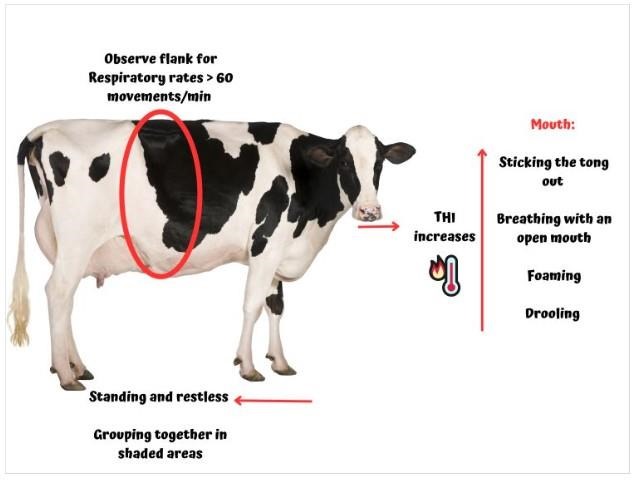By Gunnar Rundgren
Domestic livestock is not the major cause of loss of wild mammals.
We have all seen it, the graph showing that just 4% of the world’s mammals, by weight, are wild; humans account for 36%, and livestock for the remaining 60%.* It is certainly deplorable that there are so few wild mammals. Most people using these figures and probably most people hearing them, draw the conclusion that domestic livestock has squeezed out wild animals. But that is a far too simplistic conclusion. This is demonstrated both by large-scale top-down analysis and smaller scale empirical evidence.

To begin with crop lands occupy 1.5 billion hectares and around 1.6 billion hectares of grasslands are effectively grazed by domestic livestock. This makes up 3.1 billion hectares out of a total of 14 billion hectares. Excluding barren lands (glaciers, rough mountains) agriculture occupy “just” one third of total land area (which is of course already a lot and perhaps too much).** Land-use can affect a bigger area then it physically occupies, but clearly agriculture, whether cropping or grazing, can’t be the main reason for why there is so little wild life in the 7 billion hectares of “habitable” land which are not under agriculture management.
On a temporal scale, the decline of wild mammals often predates agriculture expansion. This is apparent in the late Pleistocene megafauna extinction taking place more than 10,000 years ago, well before agriculture and domestication of livestock. There are still heated arguments over if hunting by humans or climate change was the main cause, most likely they were combined. Some researchers have estimated that the total biomass of herbivores, approximately a billion large bodied mammals, at that time equaled current biomass of domestic animals. Regardless of the exact numbers it is apparent that the total weight of wild mammals shrank considerably by this “event”, and that mammal wild life hasn’t recovered since.
Finally, by using data for the total global primary productivity (the net photosynthesis so to say) one can see that of the total net primary production, humans and their livestock “appropriate” around 20 percent for agriculture purposes. This is of course bad enough, but it still means that there is biological space left for many more mammals and other wild life.
Even if cattle, wheat and corn now grow where bison previously roamed in North America, I have seen no convincing evidence that that the extermination of bison was driven by agriculture expansion, but rather by a combination of hunting, disease and indirect effects caused by the decline in Native American populations and abilities to manage the bison herds. Obviously, the enormous expansion of both croplands and ranching in North America would have collided with a bison herd of 60 million head, sooner or later. But cattle and bison can co-exist: according to a study from Utah there is more competition between cattle and jackrabbits than between cattle and bison when they share the same resources.
The massive death of >500 million ungulates in Africa in the late 19th century i which both domestic and (mostly) wild animals were victims was caused by Rinderpest, a disease brought in by cattle from India. This could in some way be seen as caused by “agriculture” in a wider sense, even if it was more a function of humans moving animals around than agriculture as such as domestic cattle already were all over Africa.
Research in Kenya show a certain level of competition between cattle and small herbivores but not with bigger herbivores. The researchers suggest: “that interactions between livestock and wildlife are contingent on rainfall and herbivore assemblage and represent a more richly nuanced set of interactions than the longstanding assertion that cattle simply compete with (grazing) wildlife”. Studying the populations of domestic cattle and wild life in Northern Tanzania for 17 years, researchers concluded that while there was a high density of cattle and sheep and goat “several wildlife species occurred at densities similar (zebra, wildebeest, waterbuck, Kirk’s dik-dik) or possibly even greater (giraffe, eland, lesser kudu, Grant’s gazelle, Thomson’s gazelle) than in adjacent national parks in the same ecosystem.” Research from South Africa shows that there is some competition between oribi antelope and cattle. Cattle facilitate oribi grazing during the wet season because cattle foraging produced high-quality grass regrowth. Despite this, they found that “cattle foraging at high densities during the previous wet season reduced the dry season availability of oribi’s preferred grass species.”
Click here to see more...